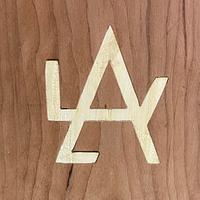Share your craft projects
Make new craft buddies
Ask craft questions
Blog your craft journey
I just do not like TB PVA glues unless I need some water resistance. Elmers wood glue is better in my experience. TB glues always seem go bad before I can use them all -- usually in about 2 to 3 years and yes I have learned to check the MFG date before I buy it. On the other hand, I bought a gallon of Elmer's Wood Glue in 2014 and it is just now starting to show signs of end of usable life. When I was building my workbench, I knew I didn't have enough of the Elmers left and could not find any at the time so bought a gallon of TB 2. I used about 1/3 of it laminating the top, legs and stretchers. I just checked and the MFG date on it is 10/21 and still seems to have the right consistency so the experiment continues. I have never had a glue joint fail when using Elmers but I have had a couple fail when using TB3.
I do like TB's liquid hide glue but I also use Old Brown Glue sometimes as well. The TB LHG seems to have a longer shelf life than the OBG, though I keep both of them in my beer fridge to extend their life. The OBG has a stiffer gel stage than the TB LHG. Since I keep them in the fridge, I often have to drop the bottle in hot water for a few minutes so that it flows better. I also have a bottle of fish glue in the fridge that I have used when gluing up light color woods. It is another protein glue. If you have used and remember the smell of Mucilage glue, the fish glue smells similar. If you remember the taste of old lick to seal envelopes, that is similar to fish glue (yes, I tasted it). Liquid hide glues are my go to for vintage furniture repairs. Many antiques are glued with hide glue so it is easy to simply remove or reactivate the old glue with warm water and just add some new hide glue. Unlike PVA glue, you do not have to remove all of the old glue to reglue something that was originally glued with hide glue. In fact, when repairing loose chair rungs or stretchers, I usually clean off the old PVA glue and use LHG for the repair.
I do not use it often these days but I also like to use Hot Hide Glue. I love it for fastening veneer and if the project is big enough to warrant mixing up a batch of HHG, it is great for assembling furniture and other large decorative pieces. It does not creep like PVA can so it is good for table top laminations, though LHG is a little easier to use for those.
I do like TB's liquid hide glue but I also use Old Brown Glue sometimes as well. The TB LHG seems to have a longer shelf life than the OBG, though I keep both of them in my beer fridge to extend their life. The OBG has a stiffer gel stage than the TB LHG. Since I keep them in the fridge, I often have to drop the bottle in hot water for a few minutes so that it flows better. I also have a bottle of fish glue in the fridge that I have used when gluing up light color woods. It is another protein glue. If you have used and remember the smell of Mucilage glue, the fish glue smells similar. If you remember the taste of old lick to seal envelopes, that is similar to fish glue (yes, I tasted it). Liquid hide glues are my go to for vintage furniture repairs. Many antiques are glued with hide glue so it is easy to simply remove or reactivate the old glue with warm water and just add some new hide glue. Unlike PVA glue, you do not have to remove all of the old glue to reglue something that was originally glued with hide glue. In fact, when repairing loose chair rungs or stretchers, I usually clean off the old PVA glue and use LHG for the repair.
I do not use it often these days but I also like to use Hot Hide Glue. I love it for fastening veneer and if the project is big enough to warrant mixing up a batch of HHG, it is great for assembling furniture and other large decorative pieces. It does not creep like PVA can so it is good for table top laminations, though LHG is a little easier to use for those.
--Nathan, TX. Hire the lazy man. He may not do as much work but that's because he will find a better way.









